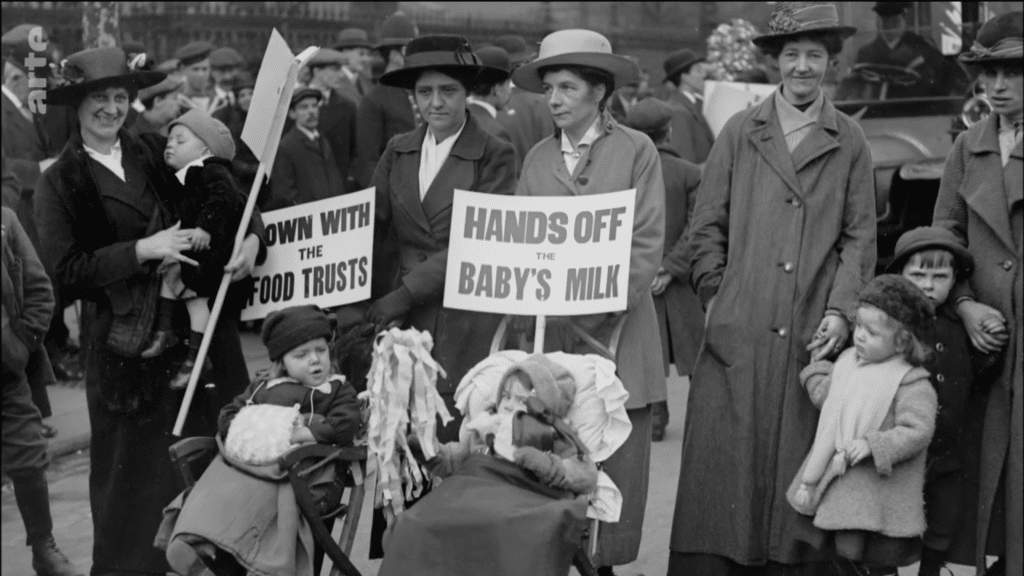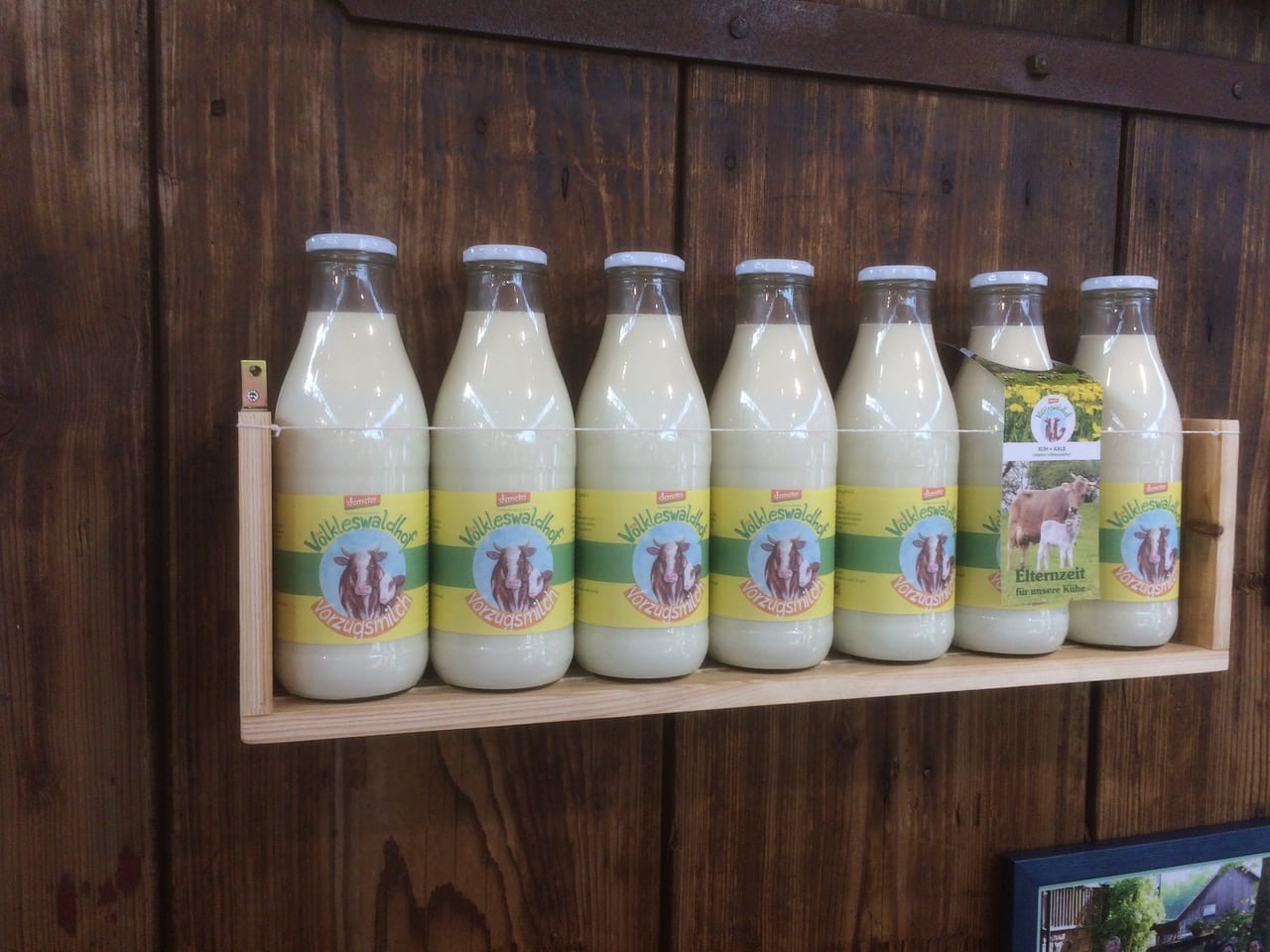In the early 20th century, i.e. around 1900, doctors were convinced that raw milk was important for growing children. The discussion was nipped in the bud by the negatives of raw milk, starting with TB. And rightly so, much milk was unsafe then. A century later, there was a first publication on the health benefits of raw milk in farm children, this time followed by many other studies on farms in some 10 other countries. Around 2020, we published a study on how adults ‘perked up’ by consuming raw milk and raw milk kefir, especially if they had immunity problems or suffered from chronic diseases. Research based on questionnaires, which were hardly taken seriously. In 2010, there was an opportunity to test a small group of children in Germany with certified and controlled raw milk. Small children who suffered from multiple allergies did not react to the raw milk, but did react to regular, heated milk from the shop (pasteurised and homogenised), (Abbring et al., 2019).

It led to Suzanne Abbring’s promotion in late 2019, in which she confirmed the result in young allergic mice. Not just food allergy or milk allergy, but also asthmatic mice did not respond to the raw milk. After that, things went quiet.
You would expect, in light of the millions of asthma sufferers, the millions of children with allergy, that research would jump on top of raw milk. A leading Italian allergy researcher published his opinion on how to fight allergies in the future without once referring to the work around raw milk (Baars et al., 2020). Other researchers are more likely to develop (patented) pills from the raw milk or make a ‘raw milk without bacteria’ (Weber et al., 2024). Through this research the earning model shines through, and pocketing patents is quite normal today if you are a top researcher (see former Dutch minister and scientist Plasterk). It remains weird to make knowledge a revenue model.
Raw milk is like a leper, something to be avoided as a consumer. Most scientists and policy officials are at the forefront of the queue to point out that consumption of raw milk and raw milk products is a danger to humanity. You can get sick from it, die from it. Well, but asthma also kills thousands of people every year and allergies are not exactly decreasing in the world. There is more to it, namely the revenue model. There is no revenue model in the capitalist world for raw milk. Raw milk is a bulk product, a commodity of interest to industry, just like corn, grain and soya. Only a farmer who sticks his neck out and does his stinking best to produce the most hygienic milk possible can earn something from raw milk. How different our lives would be if we paid doctors and farmers to keep us healthy instead of treating people with pills when they got sick. With real food, mostly raw and fermented and from a short chain. Chinese doctors apparently used this revenue model centuries ago: pay for health.
Repurposed drugs
It is like with the group of ‘repurposed drugs’, drugs of often simple composition that are off-patent and have been found to work well for conditions other than those for which they were invented. Asparin, made originally from the bark of the Willow tree, used in heart patients, as well as Ivermectin, a preparation used in worm infestations, has long been tested for numerous cancers (see video Campbell). It does not get much further than animal trials, which are successful, but the step to human studies are not made. Aspirin and Ivermectin can no longer be patented and therefore there is no longer a revenue model for the pharmaceutical industry. Vitamin D has never been studied so much in recent years, not so much in relation to English disease in young children in dark English cities, but was found to have protective effects in Covid19 patients at much higher doses (Fernández-Jiménez et al., 2024). The line between diet and medicine are razor thin with the ‘old, natural medicines’. It can just be part of your daily routine to protect you from diseases in the long run, to support your immune system, to shorten time in intensive care.
It’s like raw milk. Nobody can make any money from it, but you benefit from having it at your disposal.
Literature
- Abbring, S., Kusche, D., Roos, T. C., Diks, M. A., Hols, G., Garssen, J., … & van Esch, B. C. (2019). Milk processing increases the allergenicity of cow’s milk – Preclinical evidence supported by a human proof‐of‐concept provocation pilot. Clinical & Experimental Allergy, 49(7), 1013-1025.
- Baars, T., Wold, A., Vuitton, D. A., Garssen, J., & Berge, A. C. (2021). Raw cow milk consumption and the atopic march. Frontiers in Pediatrics, 9, 613906.
- Simón-Frapolli, V. J., López-Montalbán, Á., Vegas-Aguilar, I. M., Generoso-Piñar, M., Fernández-Jiménez, R., Cornejo-Pareja, I. M., … & García-Almeida, J. M. (2024). Relationship between vitamin D levels with in-hospital complications and morphofunctional recovery in a cohort of patients after severe COVID-19 across different obesity phenotypes. Nutrients, 17(1), 110.
- Weber, M., Hehn, F., Huynh, Y., Remkes, A., Strunz‐Lehner, C., Häuser, I., … & Ege, M. J. (2024). Prevention of allergies and infections by minimally processed milk in infants – The MARTHA feasibility and safety trial. Pediatric Allergy and Immunology, 35(10), e14251.
A conversation about repurposed drugs can be heard on John Campbell’s channel:




